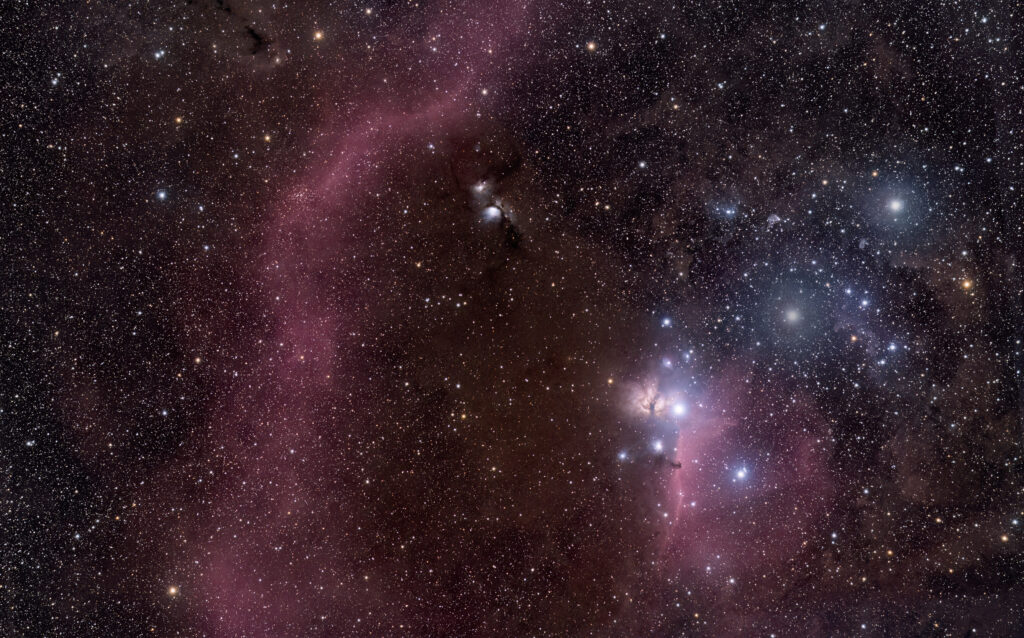Heute zeige ich einen Ausschnitt aus dem großen Wintersternbild „Orion“, das zur Zeit wunderbar von Südosten bis Südwesten in klaren Nächten zu sehen ist.
Nach der griechischen Mythologie war Orion ein großer Jäger, der manchmal als Sohn des Poseidon, aber auch als Sohn des Zeus oder Hermes vermutet wird. Weil er versehentlich seine Mutter, eine Nymphe, tötete, wurde er als Folge dieser Tragödie an den Himmel versetzt.
Um die drei großen blauen Gürtelsterne des Orion schwingt sich ein riesengroßer Bogen aus Wasserstoffwolken, in welchem es laufend zur Entstehung neuer Sterne kommt. Entdeckt wurden diese Wolken von dem Astronomen Edward Barnard, nach welchem er benannt ist: Barnard`s Loop.
Auch der etwas rechts von der Bildmitte zu sehende Flammennebel ist ein solches Sternentstehungsgebiet.
Knapp darunter ist bei genauerem Hinsehen der Pferdekopfnebel zu erkennen. Dies ist eine relativ dichte Wolke aus Staub und Gas, die das Licht dahinterliegender Sterne verdeckt.
Im zweiten Bild habe ich die Sterne herausgenommen, um zu verdeutlichen, wieviel Gas, Staub uns sonstige interstellare Materie in dieser Region anzutreffen ist.
Euch allen ein schönes Wochenende
Hans
Today I’m showing an excerpt from the large winter constellation “Orion”, which is currently
can be seen wonderfully from the southeast to the southwest on clear nights. According to Greek mythology, Orion was a great hunter, sometimes thought to be the son of Poseidon, but also the son of Zeus or Hermes. Because he accidentally killed his mother, a nymph, he was transported to heaven as a result of this tragedy. A huge arc of hydrogen clouds swings around the three large blue belt stars of Orion, in which new stars are constantly being formed. These clouds were discovered by the astronomer Edward Barnard, after whom is named: Barnard’s Loop. The flame mist that can be seen slightly to the right of the center of the image is also one of these Star forming region. If you look closely, you can see the Horsehead Nebula just below. This is a relatively dense cloud of dust and gas that obscures the light from stars behind it. In the second picture I took out the stars to make it clear how much gas, dust and other interstellar matter can be found in this region.
You all have a nice weekend
Hans

